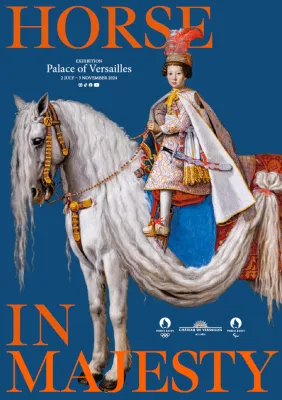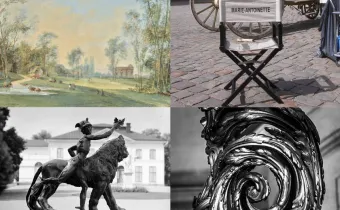horses as a reflection of man and a mirror of the times
Horses can be found at every phase in the development of western civilisation and its imaginary, acting as a mirror of the times for each era. They are also the true reflection of the men they accompany in their conquest of the world. Horses have always occupied a special place, directly below humans in the animal hierarchy, due to their combination of strength and docility, of bravery and fear, of resistance and speed, associated with elegant proportions and gait, a unique soul, a peculiar ability to intuit human emotions, and exceptional usefulness.
Horses are also the animals of the nobility par excellence. From the Ancien Régime, by their presence alone in depictions, they could indicate rank, define social hierarchies, and consolidate power. As political animals, horses enhanced the majesty of sovereigns. They contributed to the process of glorifying the horseman-king as a hero of legend by conjuring up saints and knights.
The exhibition
Horses are a vast subject, “a whole world to be studied”, according to the 19th century painter Eugène Fromentin. Informed by new research, this exhibition explores the many facets of the topic – political, artistic, diplomatic, scientific, spectacular, real, and imaginary.
The exhibition brings together some 300 works from public and private collections, in France, but predominantly internationally, to provide a new and comprehensive perspective on the theme of horses.
The aim is to reveal the extraordinary richness of equine civilisation in Europe from the 16th to the 20th century – from the dawn of the modern period, which witnessed a radical change in the position and use of horses in civil and military society, through to the eve of World War I, which marked the demise of horses as a means of locomotion in society, and their relegation to the sphere of leisure.
The exhibition is laid out across several iconic spaces in the Palace of Versailles: the Africa Rooms, the Hercules Room, the Hall of Mirrors, the War and Peace Rooms, and the apartments of Madame de Maintenon and of the Dauphine.
Exhibition curators
Laurent Salomé, Director of the National Museum of the Palaces of Versailles and Trianon
Hélène Delalex, Heritage Curator, National Museum of the Palaces of Versailles and Trianon
Scenography
Loretta Gaïtis et Irène Charrat
This exhibition is made possible thanks to the exclusive patronage of the CMA CGM Group.
With media partners :






